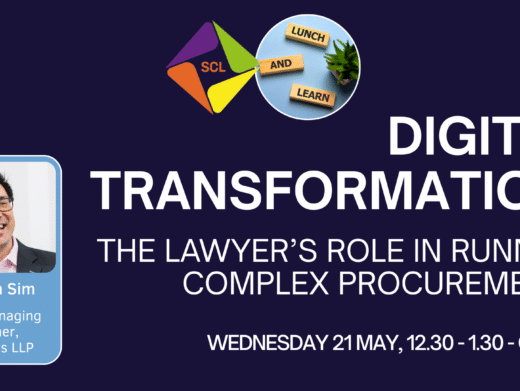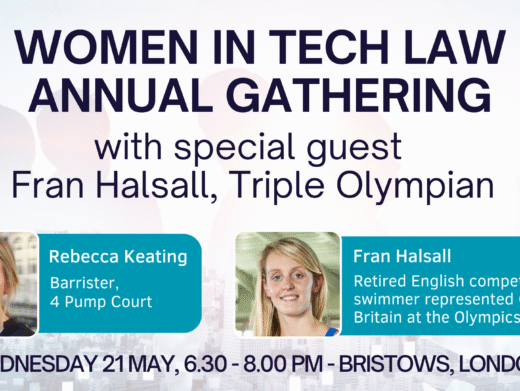The need for a careful balance between IP law and competition law is particularly clear in industries characterised by rapid technical changes; high degrees of interoperability and intense patenting often of incremental, but still patentable, advances.
Where patents are granted, patent law allows the patentee to prevent others from using the ‘invention’ without a licence. The terms on which licences are made available and the consequences when they are refused may be the subject of consideration under competition law. Competition law prohibits agreements which restrict competition and penalises parties who abuse a dominant position.
The relationship between the patent right, with the restraints it may place on competition, and the circumstances in which those restraints have unacceptable consequences, has been raised squarely in the litigation between Intel and VIA. The Court of Appeal’s comments on the correct approach are a useful guide to where that balance should be struck. However, as the Vice-Chancellor remarked: “the ingredients of computer technology, patent infringement and Articles 81 and 82 make a somewhat indigestible dish” [89]. This article explains the Court of Appeal’s approach to that rich stew.
Background
The Court of Appeal’s judgment deals with one aspect of wide-ranging and hard fought litigation between Intel and VIA. In September 2001, Intel sued VIA Technologies alleging infringement of Intel patents covering aspects of CPU microprocessors and aspects of the operation of chipsets for use in PCs. VIA responded with the usual patent defences of non-infringement and invalidity. It also raised defences based on competition law. For case management purposes, the trial was split into three parts dealing with:
- patent claims and defences relating to CPUs
- patent claims and defences relating to chipsets
- competition defences and counterclaims relating to both chipsets and CPUs.
The suggestion that a patent holder’s rights may be affected by competition law is controversial. In the
The Competition Defences
VIA raised various competition law defences. The defences raised in relation to Chipsets varied from those related to CPUs. This arose in part from differing factual backgrounds. In both ‘sets’ of defences VIA alleged that Intel is dominant and that it occupies a critical position in the IT industry because of its dominance over key product markets. Intel is a designer and manufacturer of CPUs and also makes chipsets for use in PCs. VIA also supplies both products.
As the Court of Appeal hearing was a preliminary hearing, the Court of Appeal did not investigate whether the background allegations of fact were correct, but proceeded on the basis that they were. The actual facts will be a matter to be determined at the full hearing of the competition issues in the case. The Defences raised by VIA were summarised by the Court of Appeal as follows [2]:
“. in the Chipset Action,
(a) Bringing these proceedings is an abuse by Intel of the exercise of intellectual property rights and/or Intel is estopped or otherwise precluded from obtaining the relief sought in these proceedings;
(b) The refusal of Intel to grant a licence to VIA either at all or on lawful or reasonable terms is an abuse of a dominant position and Intel is not entitled to the relief sought;
and, in the CPU Action,
(c) The refusal of Intel to grant a licence to VIA either at all or on lawful or reasonable terms is an abuse of a dominant position and Intel is not entitled to the relief sought;
(d) Intel’s refusal to licence VIA in respect of the patents in suit is abusive because it forms part of a plan to withdraw from the market certain products for which there is a continuing demand, and to force consumers and users to adopt a new and more expensive technology.”
In relation to the defences summarised at (a) and (b) above, Intel had offered VIA a licence to use its patents in the manufacture of chipsets. However, VIA argued that the terms of the licence offered were unreasonable and unlawful in two respects:
(i) VIA said that it was anti-competitive for Intel to offer it a licence under which it would be entitled to manufacture only certain chipsets when Intel required VIA to cross-license Intel under VIA’s patents to manufacture any product, including CPUs. This lack of reciprocity was alleged to be anti-competitive and to infringe both
(ii) VIA said that the particular terms on which Intel offered to license it to manufacture chipsets would themselves be anti-competitive as they would regulate the market in chipsets for use with Intel CPUs.
Decision of
In June 2002, Lawrence Collins J struck out all VIA’s competition based defences summarily, declaring that they would not have a real prospect of success at trial.
In response to the claim that Intel had abused its dominant position by refusing to grant a licence, the first instance judge relied on the ECJ decision in Magill (Independent Television Publications (ITP) and Radio Telefis Eireann (RTE) v Commission [1995] 4 CMLR 718 ECJ: often referred to as the ‘TV Listings’ case). He confirmed the general view that that case established that the exercise of an exclusive right conferred by IP law would be an abuse of a dominant position only in ‘exceptional circumstances’. However, he also held that the way in which the ECJ had categorised ‘exceptional circumstances’ was exclusive, and did not envisage any other circumstances that might also give rise to a breach of Article 82. He further held that this meant that VIA’s allegations were not of the type covered by Article 82, as explained in Magill.
In relation to the ‘licence’ defences, Lawrence Collins J held that, if VIA was right to argue that offering such terms could give rise to a defence, this would result in any unaccepted offer of a licence being in breach of Article 81. He thought that this could not be the case. He also held that the terms pleaded by VIA would not infringe Article 81.
Court of Appeal
In December 2002 the Court of Appeal upheld VIA’s appeal against the judgment of Lawrence Collins J.
In relation to the Article 82 defences, the Court held that the ‘exceptional circumstances’ required for Article 82 to apply to a refusal to license could be other than those identified in Magill and may be extended to the facts pleaded by VIA. In other words, a patent holder may be under an obligation not to exercise his right so as to exclude competitors from the market in circumstances that may differ from those identified in the Magill case. Morritt V-C commented [48-49]:
“. Magill and IMS indicate the circumstances which the Court of Justice and the President of the Court of First Instance respectively regarded as exceptional in the cases before them. It does not follow that other circumstances in other cases will not be regarded as exceptional. In particular, it is at least arguable, as the President recognised in IMS, that the Court of Justice will assimilate its jurisprudence under Article 82 more closely with that of the essential facility doctrine applied in the
I would in any event reject the submission. that the IMS test requires the exclusion of all competition from all sources. . Were it otherwise, liability under Article 82 could be simply avoided by the grant of a licence to an unenergetic rival”.
In relation to the defences based in the licence terms, the Court of Appeal concluded that VIA had a “real prospect of success in demonstrating that both . would be incompatible with Article 81 if contained in an agreement or undertaking” and that the defences based on those terms should be reinstated for consideration at trial. The Court of Appeal held that, having come to the view that the licence terms complained of by VIA were capable of infringing Article 81, it was possible for VIA to rely at trial on an earlier Court of Appeal decision British Leyland v TI Silencers [1981] 2 CMLR 75 (particularly paras 7 and 8 on pp 78/79). In that case Templeman LJ had suggested that, where an owner of an IP right was prepared to offer licences only on terms infringing competition law, the court might not grant an injunction against an infringer who needed such a licence, but who ‘was unwilling to accept or assist or acquiesce in any breach of Community Law’.
Conclusion
This decision is a summary one and the facts still need to be determined, and the law applied to those facts, at trial. It remains to be seen how these competition defences will be received at the full trial of the issues (likely to begin in January 2004). The judgment of the Court of Appeal is, however, significant in its own right as a review of the interplay between IP law and competition law. Of particular interest to competition lawyers will be the general comments of Morritt V-C, quoted above, about the exceptional circumstances in which competition law may prohibit a refusal to license by a dominant company.
The commercial importance of the issues for the IT industry may be gauged from Morritt V-C’s comments [91]:
“If what VIA alleges is made out then the dominance of Intel in the world-wide market in the important and developing technology for PCs is buttressed by its enormous portfolio of patents and restrictive licensing policy. This may be true of others but in the case of this technology the commercial and technical requirement for compatibility of hardware and software confers on the industry leader an even more impregnable position.”
It is interesting that, despite having some reservations about the ultimate success of some or all of the defences, the Court of Appeal appeared to believe that they raised real issues of importance not just to the parties, but in terms of general policy. Often, as noted above, ‘Eurodefences’ are struck out and not permitted to proceed to trial. Here, however, Mummery LJ, concurring with Morritt V-C, underlined the importance of the issues raised in this case [96]: “This is not a straightforward case of an alleged infringer simply being refused a licence by the patent holder. The momentous issues raised by the proceedings are not simply questions of law suitable for summary treatment.”
Pat Treacy is a Partner in the competition law department at Bristows. Bristows acted for the Defendant and Counterclaimant in this matter both at first instance and on appeal.




